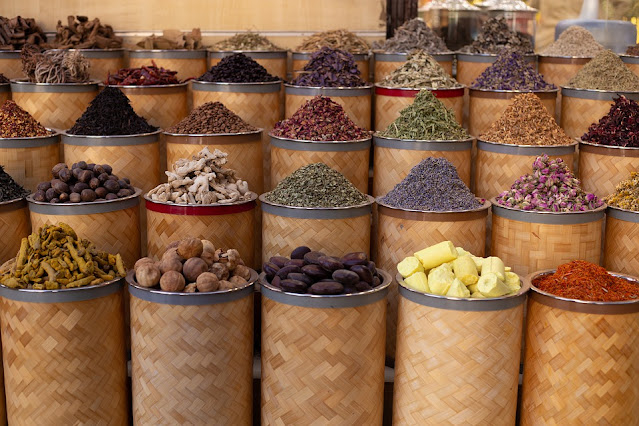Uncovering this, spices and herbs became an effective way in masking unpleasant tastes and odors of food, until eventually unearthing the wonderful zest and aroma of some herbs in improving the flavor of food. Over the years, people began to distinguish the herbs used as flavor enhancers from those used for medicinal purposes through their pleasant or agreeable odor.
Early on, ancient India have black pepper, turmeric, and cinnamon as among the spices used for culinary and health purposes. Turmeric and cardamom are spices indigenous to the region and have been cultivated in the gardens of Babylon as early as the 8th century B.C. The herbs gradually became a part of the strong Indian cuisine as a flavor enhancer.
- To preserve fresh herbs, wrap clean leaves in paper towels and store them whole inside
the refrigerator. The harder the leaves, the longer it lasts since the oil of the leaves is retained and the flavor is preserved.
- Powder of dry leaves should be stored in a tight container to prevent the breaking of its aromatic oil elements. It is important to check your leaves from time to time to ensure dryness. Herbs mold quickly in closed jars or containers if not stored completely dry.
- If you have a food processor, place your herbs in the processor, add some drops of oil and that's it. Refrigerate the mixture and scoop up some pureed herbs anytime.
- Freeze fresh and leftover herbs. It helps preserve the plants' intense favor that you can use for months. Place them in freezer-safe bags so you can simply pull out what you need.
- What about ice-cubed herbs? Try putting the herbs in an ice cube tray and top with water with a little bit of oil. Although they are limp once defrosted, they still possess strong flavor properties that add fabulous flavor to your cooking.
- Mix fresh leaves with fruits, juices, vegetables, or any uncooked food several hours before serving. This gives enough time for all the flavors to marry and come out in a well-blended taste.
- In making salad dressings, mix your spices with the vinegar and let stand for a few minutes prior to adding the oil. You'll have a robust-tasting vinaigrette.
- The presence of herbs gives zest to dishes as garnishing or ornaments, flavoring, accompaniment, or simply consumed raw. Plain fried rice, for example, gets an intensified flavor with garlic.
- For a sharp flavor, crush fresh herbs with your hands to make the most of their robust flavor and add them near the end of cooking.
- Master some herbs and spices combination. While they enhance flavor in a dish, too many spice flavors may mess up your entree.
- Hot spices like red pepper intensify flavor as they heat. Add little by little for the flavor to strengthen during the cooking process.
- Avoid sprinkling seasoning in a steaming pot. There's a tendency for moisture in food to rise and reduce the potency of your seasoning. Boiling food may also clump the powdered spice. Add your spices after you have boiled, or to a cooked dish.





Comments
Post a Comment